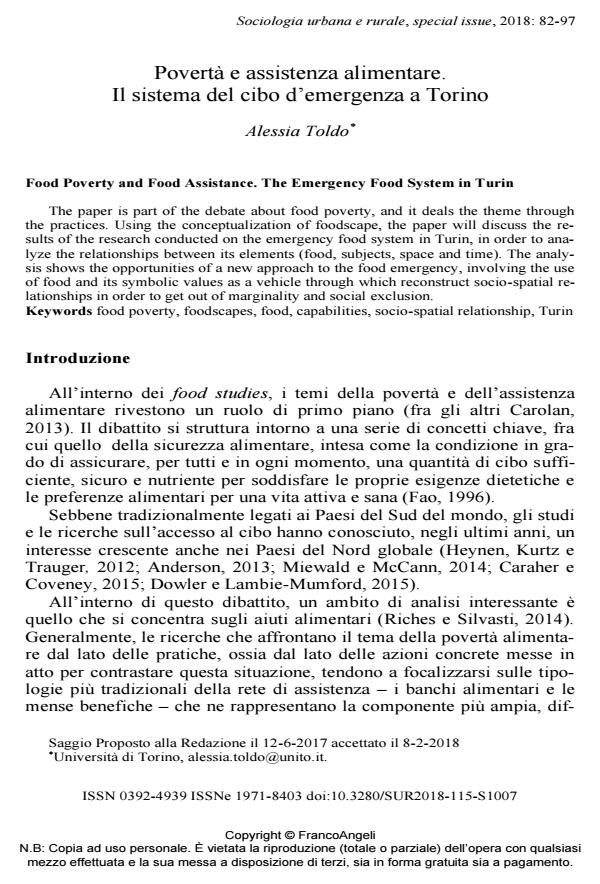Food Poverty and Food Assistance. The Emergency Food System in Turin
Journal title SOCIOLOGIA URBANA E RURALE
Author/s Alessia Toldo
Publishing Year 2018 Issue 2018/115suppl.
Language Italian Pages 16 P. 82-97 File size 392 KB
DOI 10.3280/SUR2018-115-S1007
DOI is like a bar code for intellectual property: to have more infomation
click here
Below, you can see the article first page
If you want to buy this article in PDF format, you can do it, following the instructions to buy download credits

FrancoAngeli is member of Publishers International Linking Association, Inc (PILA), a not-for-profit association which run the CrossRef service enabling links to and from online scholarly content.
The paper is part of the debate about food poverty, and it deals the theme through the practices. Using the conceptualization of foodscape, the paper will discuss the results of the research conducted on the emergency food system in Turin, in order to analyze the relationships between its elements (food, subjects, space and time). The analysis shows the opportunities of a new approach to the food emergency, involving the use of food and its symbolic values as a vehicle through which reconstruct socio-spatial relationships in order to get out of marginality and social exclusion.
Keywords: Food poverty, foodscapes, food, capabilities, socio-spatial relationship, Turin
- Alternative Food Networks Egidio Dansero, Giacomo Pettenati, pp.273 (ISBN:978-3-319-90408-5)
Alessia Toldo, Povertà e assistenza alimentare. Il sistema del cibo d’emergenza a Torino in "SOCIOLOGIA URBANA E RURALE" 115suppl./2018, pp 82-97, DOI: 10.3280/SUR2018-115-S1007